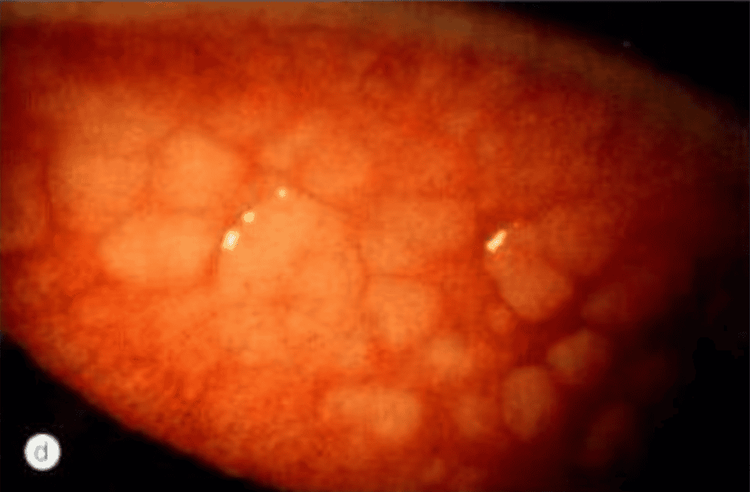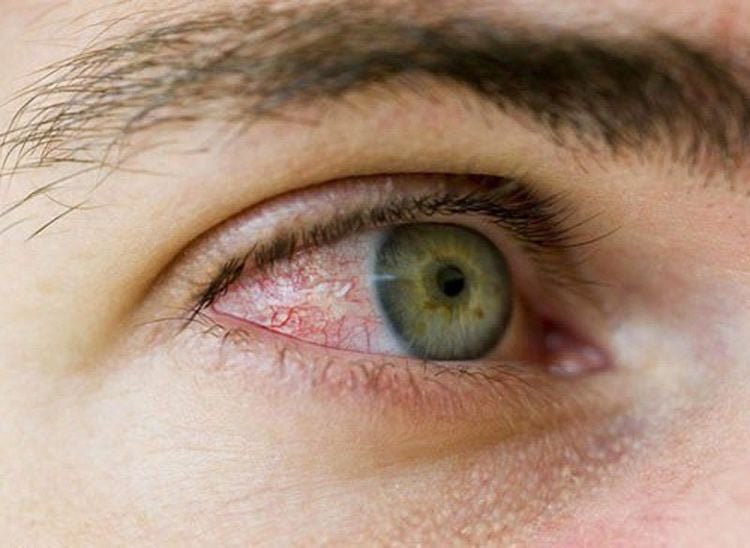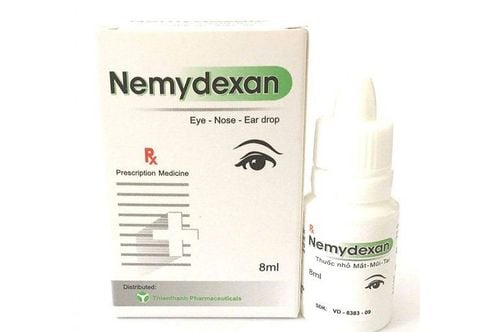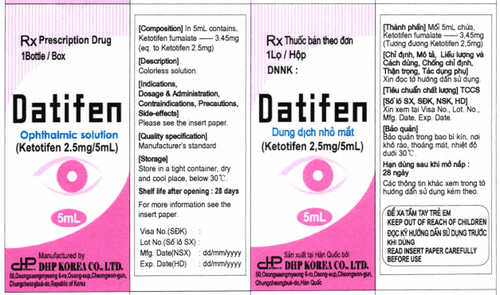This is an automatically translated article.
The conjunctiva is a thin membrane that covers the surface of the sclera (white) and lines the inner surface of the eyelids. Allergic conjunctivitis is a common disease of the conjunctiva, consisting of inflammatory reactions when exposed to allergens (substances that increase the body's immune system, release substances that cause itching, dilation, and swelling. circuit...).
1. Classification of allergic conjunctivitis
Acute allergic conjunctivitis : The pathogenesis is an acute inflammatory response immediately after exposure to allergens. The eyelids and conjunctiva are sometimes frighteningly swollen, however, this usually lasts for several hours and is self-limiting. Seasonal or year-round allergic conjunctivitis: Allergies are more severe seasonally (usually spring or summer in temperate countries) or may be present year-round and are associated with allergic rhinitis. Spring allergic conjunctivitis: This is a special form of the disease, usually appearing in boys aged 5-7 years, with a history of eczema, a history of allergies in the family. This disease can damage the cornea, affecting vision.
Conjunctival allergy: Usually occurs in adults with a history of eczema or asthma. This type of allergic conjunctivitis presents year-round, in addition to the conjunctiva, causing damage to the eyelids (swelling, scaling, pterygium) and associated corneal vision loss. Giant papillary allergic conjunctivitis: This is a disease caused by direct mechanical contact of the eyelid conjunctiva with foreign objects such as contact lenses, prosthetic eyes, sutures... eyelids visible on clinical examination.

Hình ảnh thực tế bệnh viêm kết mạc dị ứng nhú gai khổng lồ
2. Symptoms of allergic conjunctivitis
2.1. Acute allergic conjunctivitis Acute allergic conjunctivitis has clinical manifestations:
Red, gritty eyes like sand in the eye and a lot of discharge, usually red in one eye first, then it can spread to the second eye. Eye rust can be clear or yellow depending on the cause. The eyelids are swollen, succulent, and red due to the swelling of blood vessels in the eyes. In some cases, there may be subconjunctival hemorrhage or pseudoconjunctival hemorrhage. The appearance of pseudomembranous often causes damage to the cornea, causing pain in the eyes, blurred vision, photophobia, and may cause vision loss later on. In some cases, there are signs of fatigue, mild fever, nasopharyngitis, swollen lymph nodes in front of the ears, sore throat when swallowing saliva. It is necessary to distinguish acute allergic conjunctivitis caused by gonococcal: The course of the acute phase is 12-48 hours, the discharge, purulent secretion a lot, overflowing the eyelid slit, this is a characteristic sign of the disease. The course of the disease is very rapid and leads to corneal perforation.
2.2. Chronic allergic conjunctivitis The most common symptoms of chronic conjunctivitis include:
Redness in one or both eyes Itching in one or both eyes Discomfort in one or both eyes Pus or fluid in one or both eyes that forms a film while you are sleeping at night and you may find it difficult to open your eyes in the morning after you wake up.

Viêm kết mạc dị ứng mạn tính gây cảm giác khó chịu ở mắt người bệnh
3. Complications of allergic conjunctivitis
Allergic conjunctivitis is not inherently dangerous to health, but if not detected and treated correctly, it can cause dangerous health problems such as corneal ulcers and vision loss.
3.1. Corneal ulceration The first complication if allergic conjunctivitis is not treated effectively is corneal ulceration. When suffering from corneal ulcers, the patient will see red eyes, sometimes swelling, eyes glare, pain, fear of light, watery eyes, difficult to open eyes. The patient's vision is greatly reduced, in severe cases, the eyes can only perceive light.
Furthermore, corneal ulcers can cause endophthalmitis, which is an infection that spreads to the back of the eyeball. This is a serious complication that is difficult to treat conservatively and can cause ocular atrophy.
3.2. Reduced vision If infected allergic conjunctivitis can be very contagious, vision loss causes eye strain: making it difficult to focus on objects, especially your eyes can focus when shifting vision from one distance to another. At the same time, it also causes burning pain in the eyes and when the condition worsens, the phenomenon of dryness, blurred vision, impaired vision. However, allergic conjunctivitis is not serious and does not harm vision if detected early and treated promptly.

Khám mắt, kiểm tra mắt định kỳ giúp mọi người phát hiện bệnh lý kịp thời điều trị
To register for examination and treatment at Vinmec International General Hospital, you can contact Vinmec Health System nationwide, or register online HERE.
SEE MORE
Conjunctivitis of the eye: Causes, symptoms, treatment and prevention Bacterial conjunctivitis should use what kind of eye drops? What to do when you have an allergic reaction to the skin around your eyes?













